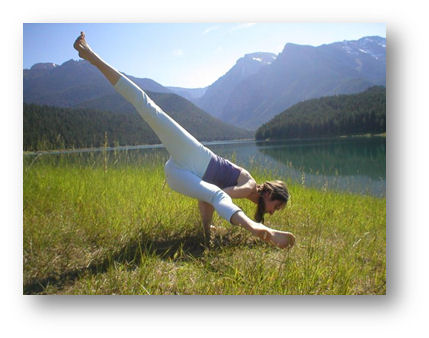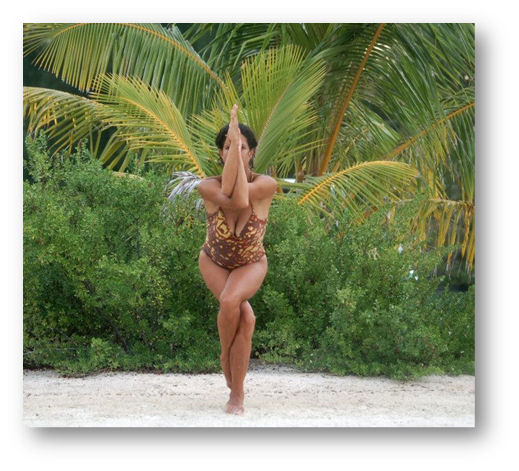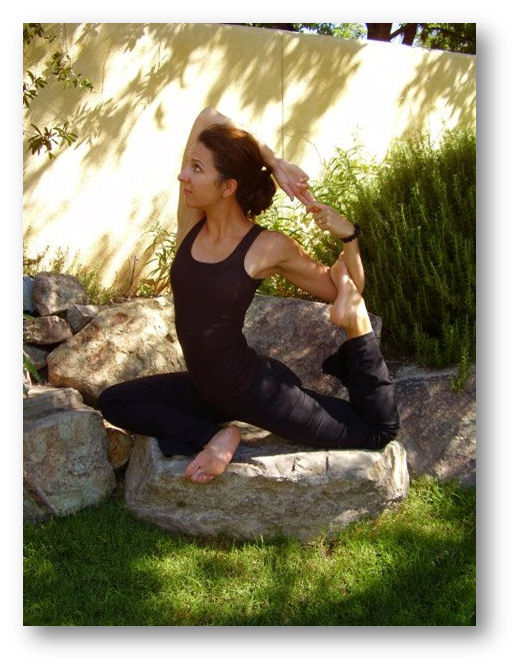|
Yoga Oasis TeacherWhat is yogaBy George MeraYoga is an ancient tradition derived from the Vedas, one of the oldest bodies of texts on earth. Veda is a Sanskrit word meaning knowledge. There are four Vedas and thousands of verses. In the second century, a systematic approach of Yoga was presented by Patanjali in the yoga sutras. Yoga means union, and sutras are the rope or threads that hold things together. In these sutras, there are 8 limbs (path to unite with the infinite mind). The limbs are Yama self-purification, Niyama self-study, Asana posture, Pranayama breath control, Pratyahara sense control, Dharana concentration, Dhyana meditation, and Samadhi bliss. The practice of the physical part is called Hatha Yoga. Hatha means the sun and the moon and is the same principles of opposites as yin and yang. Yoga means connection and is usually referred to as the practice of Asana (postures). Hatha Yoga is the physical way to harmonize the channels of energy in the body. In the Vedic tradition, there are 72,000 channels, called Nadis. Where they intersect they create vortexes of energy called Chakras. The postures in Yoga are designed to open the channels promoting the Prana (vital energy) to flow, releasing any blockage in the emotional and mental planes and to unfold all the potential that human beings possess. For Yogis, we are functioning with only 10% of our physical, mental and emotional capacities. So practicing an advanced pose shouldn't be a way to show off or auditioning for a circus, but rather to reach deeper than 10% of our potential. In Yoga, the truth of your life is in the spine. You are as young as your spine is flexible. In Kundalini Yoga the goal is to activate the foundation of the spine to open the Shushuma Nadi. This is composed of two channels, Pingala and Ilda, which run around the spine like serpents. Pingala is related to the right nostril and is active to produce Agni (fire or yang). Ilda is negative and related to relaxation and the left nostril. Running the Shushuma Nadi will activate the 7 chakras to arrive at the higher centers in the head. In Yoga the intention (Sankalpa) for the class is essential; this puts you in the present moment. What is necessary to emphasize today? What is necessary to do to be present no matter what happened before the class? During the years I've been teaching I notice people coming to practice with many unrealistic expectations and in a hurry to accomplish them. We have many desires in life (Kamas). When they are not satisfied, they frustrate us. When this feeling is constantly repeated it sours us and matures into anger (Kroda or Raudra)). I see this Kroda in the mats; people muscling the poses, swimming against the current, forgetting to be kind with them, neglecting their own observation of the mind-body connection.
Isabelle Gallo- Rousselle
Even when you scratch your itchy nose there is a thought behind the movement. That is called body language. So we can observe a person's emotional state in the way they walk. In Yoga, through repetitions, new muscle memory is established, a more harmonious communication between mind and body. For some people, it is more important to pay attention to other people's mats, what they are wearing, how they look. You start comparing, so questions arise, weakening the self-esteem and confidence. Then you lack concentration(Dharana), and with a negative attitude, it could be the growing field for envy (Matsarya). If you are lucky and your desires are fulfilled, it could also be a setback. If you lack proper spiritual cultivation, it could grow into pride (Munda), people surrounding themselves with this aura of superiority. So the ego (Ahankara) is unleashed. When the ego grows, it's not important how you feel about yourself, but rather in relationship with an observant. This observant becomes your attachment (Moha) so we need attention. Some people start teaching for the wrong reason such as this.
Kamala Nayeli French Polynesian teacher
If this moha is not controlled it might transform into Greed (Lobha), for this state of mind his way is the only and the best. As human beings, we want to be better than anybody else and we don't want anybody to be better than ourselves. These illusions (Mayas) of the mind can be avoided by putting things in perspective. Is it really going to make you happier to put your leg in the back of the neck? When you are humble you are teachable, open-minded and receptive to the truth of the universe (that is, your own truth). You are moving patiently in the right direction of greatness, true happiness and peace of mind. Debacle awaits the arrogant. The first Vayu is called Apana (down). It runs from the navel to the lower extremities and it facilitates the elimination of waste products, reproduction, giving birth and menstruation. Breathing down to the floor of the pelvis, the perineum, inhaling through the toes, contracting gently the sphincter is called Mula Banda (lower lock). This Vayu is extremely important. If your skeleton system is not in alignment you are building on sand. No matter how good you think you are doing your form or pose, with time gravity will be your worst enemy. Detection of imbalances in the extremities guarantees longevity in the practice. If the foot is inverted or everted, that is if the knees are not directly above the ankles and in alignment with the second toe, correction is necessary. Some muscles should be strengthened, other stretched. Yoga is Science, Kinesiology, and Art. The second Vayu is called Samana; it's located between the diaphragm and the navel. This Vayu facilitates the digestion of food and thoughts. This area needs to be flexible and strong because every movement is actually originated here. The diaphragm is the principal muscular membrane responsible for breathing. Yoga has many ways to strengthen this area. The third Vayu is called Prana; it runs from the navel towards the beginning of the neck. This Vayu is related to ingestion of air, food, and information. Bad posture creates chronic tension in the chest which should not be convex or concave. Any blockage could affect the heart, lungs or emotions, resulting in hypertension, elevated cholesterol, sadness, stress, etc. The four Vayu is called Udana; it runs up from the neck to the crown of the head. 30% of all the oxygen goes to the brain. In inversions, headstands, and handstands the position of the neck is important, decompressing the spine.
Stephanie Boyden
The fifth Vayu is called Vyana; it goes from the center of the body to the extremities. Here resides the ability to expand some energy from the center of the body through the toes and fingers. This facilitates the action of the lymphatic system and the elimination of toxins, avoiding physical tension. Some Yogis never teach the physical part, since 90% of all the problems that we have are Somatic. For the regulation of the mind and breath is more transcendental. When two people say they have incompatible personalities and are going to get divorced it is not really incompatible personalities but incompatible habits. Your personality is made of habits; positives, negatives, emotional and mental. So, more than changes that are usually imposed or temporary, we are looking for transformation growing from within, deep awareness as a witness, not a protagonist, of our actions, responses, and emotions. ayu is called Vyana; it goes from the center of the body to the extremities. Here resides the ability to expand your energy from the center of the body through the toes and fingers. This facilitates the action of the lymphatic system and the elimination of toxins, avoiding physical tension. Some Yogis never teach the physical part, since 90% of all the problems that we have are Somatic. For the regulation of the mind and breath is more transcendental. When two people say they have incompatible personalities and are going to get divorced it is not really incompatible personalities but incompatible habits. Your personality is made of habits; positives, negatives, emotional and mental. So, more than changes that are usually imposed or temporary, we are looking for transformation growing from within, deep awareness as a witness, not a protagonist, of our actions, responses, and emotions.
|
|
 |
|
Exercise Fitness Videos
Free Union VA
Phone: 520-982-3150
Email: gchiman@outlook.com




